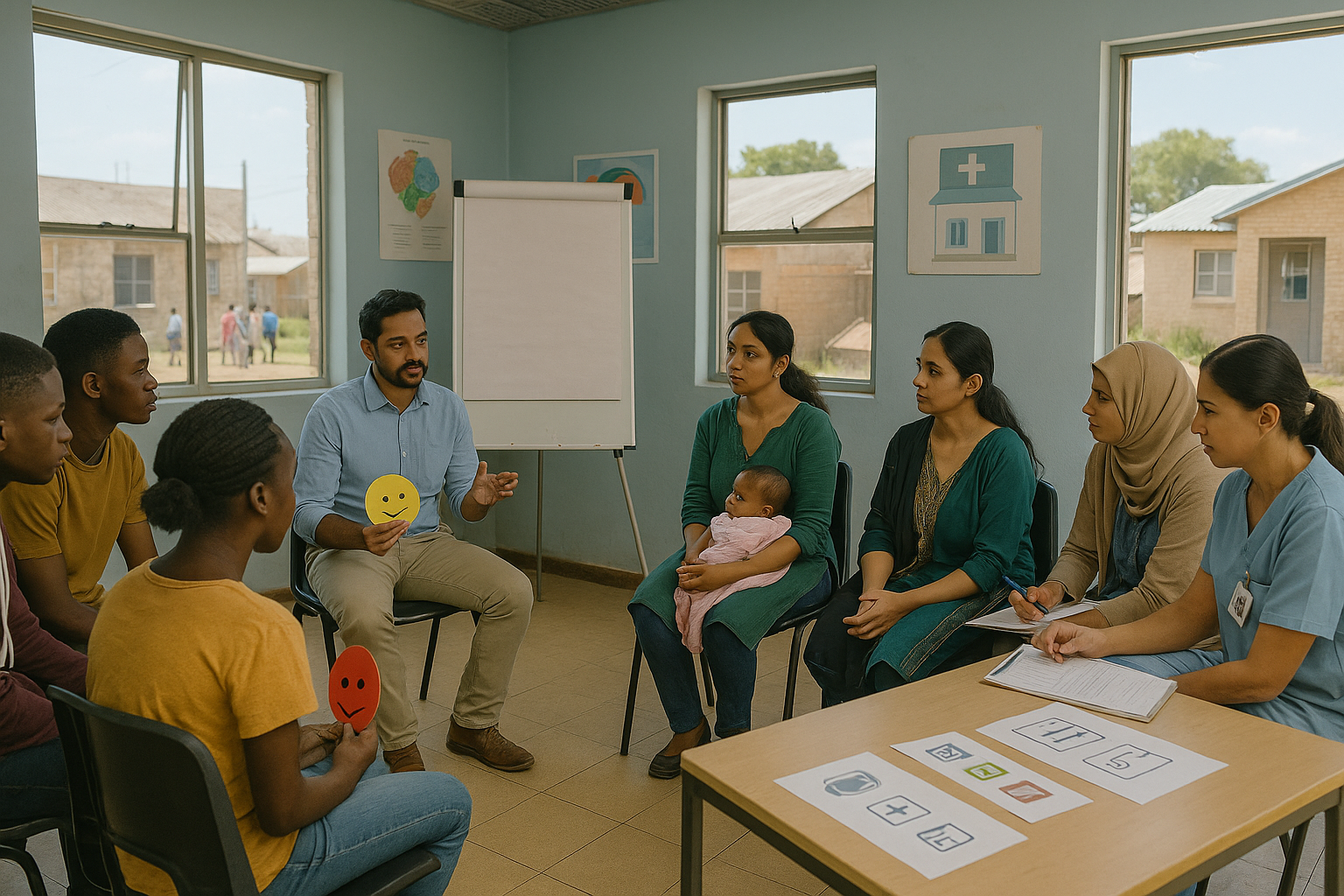Blueprint to transform child mental health care in Global South
The study argues that children and youth in disadvantaged urban areas face stacked risks, poverty, unsafe neighborhoods, poly-victimisation, gender inequities, and persistent stigma, while mental health provision is fragmented, adult-centric, and often mismatched to local culture when imported wholesale from the Global North.

A new peer-reviewed study published in Clinical Child Psychology and Psychiatry sets out an end-to-end framework to overhaul child and adolescent mental health (CAMH) support in resource-constrained settings, showing how stigma reduction, community co-production, task-sharing, and inter-agency integration can be sequenced into a workable service model.
The paper, “A child mental health service transformation framework in the Global South,” provides empirical evidence from projects implemented in Ekurhuleni, South Africa and Karachi, Pakistan.
Why a transformation framework is needed
The study argues that children and youth in disadvantaged urban areas face stacked risks, poverty, unsafe neighborhoods, poly-victimisation, gender inequities, and persistent stigma, while mental health provision is fragmented, adult-centric, and often mismatched to local culture when imported wholesale from the Global North. Therefore, needs escalate while help-seeking lags. The authors contend that systems change must leverage collectivist strengths already present in Global South communities, including schools, faith-based organizations, youth centers, community volunteers, and paraprofessionals.
Against this backdrop, the researchers set out to build a model that is contextualised, scalable, and integrated into existing psychosocial support, rather than reliant on scarce specialist clinics. They wanted to move beyond one-off projects and create a repeatable process that local actors can adapt and own.
How the model works in practice
At the core is a five-domain service model aligned to a child’s socio-ecology: (1) safety and child/youth-centredness; (2) support for parents/caregivers; (3) school and community resilience-building; (4) upskilling frontline professionals and community volunteers; (5) access to mental health services. For each domain, local providers and stakeholders co-formulate a SMART service plan, ensuring that interventions fit local realities and pathways.
Capacity is expanded through a culturally adapted Train-of-Trainer (ToT) programme comprising 16 two-hour sessions (assessment; common child mental health problems; trauma-informed intervention frameworks; systemic/legal issues), supported by manuals, e-learning, and regular booster training. Trainers, drawn from social work, teaching, community development, youth activism and allied roles, then cascade skills to peers and front-line workers.
The framework was implemented over roughly nine months and bundled into 10 psychosocial interventions across both countries, engaging 504 end-users (youth, parents, professionals) and a focus-group sub-sample of 76 participants for process evaluation. Settings included multiple high-need neighborhoods in Karachi and the Ekurhuleni metro east of Johannesburg.
The authors synthesise the implementation into four layered processes that move knowledge from awareness to sustained impact:
-
Knowledge generation: intensive stigma-prevention, emotional literacy, and early recognition activities to surface needs and normalise help-seeking.
-
Knowledge translation and transfer: co-production aligns training to local priorities (poverty, unemployment, gender, cultural and religious context) and enables structured cascade training to families, peers, teachers, and other providers.
-
Knowledge transformation and community mobilisation: youth peer educators and parents with lived experience act as agents of change, using locally resonant formats; they are supported with supervision and clear role definitions.
-
Knowledge impact and service integration: practical tools, such as inter-agency service directories, tighten referral routes and create joint pathways across NGOs, schools, social care, primary health and community groups, extending reach despite limited specialist psychiatry.
Measured against the five domains, the field teams prioritised gender-based violence prevention and emotional safety; attachment-focused parenting support; youth emotional literacy and self-care hubs; structured awareness drives led by trained peer educators; and the creation of signposting directories managed with local partners. These choices reflected community-defined needs rather than imported templates.
What this means for scale-up and policy
The study culminates in a provisional Theory of Change that policy-makers and implementers can adapt to other Global South contexts. Its principles include: continuous stigma prevention; co-production with communities; contextualisation of psychosocial interventions; integration with informal and structural systems (education, social care, primary health); knowledge cascade via ToT; and meaningful involvement of youth and parents with lived experience.
The authors stress that prevention, promotion, and response should not be siloed; in low-resource settings, integrated community or school hubs that blend all three are more realistic and effective.
For managers and funders, the implications are direct:
- Workforce strategy: invest in task-sharing with supervision to stretch scarce specialists and build durable local capacity.
- Pathways and governance: develop joint care pathways, referral protocols, and service directories so families and front-line workers know where to go and how to connect support.
- Budgets and policy: align intersectoral budgets and national strategies to sustain integrated hubs, rather than short-term, stand-alone projects.
- Digital augmentation: where feasible, use digital tools to complement community delivery and extend reach across dispersed populations.
- FIRST PUBLISHED IN:
- Devdiscourse










